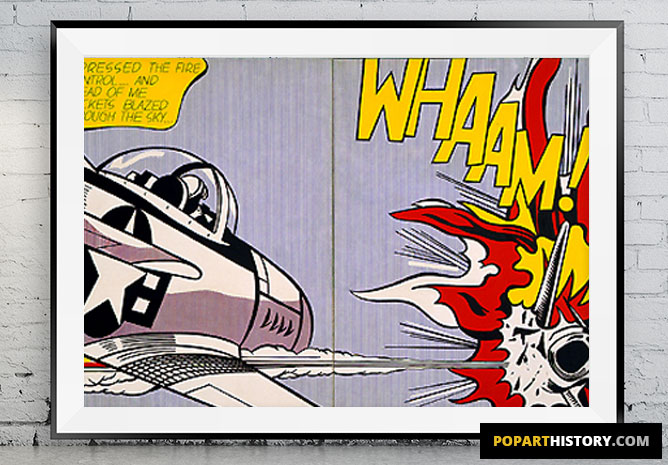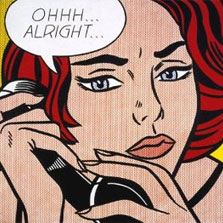| Pop Art History > Roy Lichtenstein | ||||
|
Roy LichtensteinBorn in New York to a real estate broker and a housewife, Roy Lichtenstein was raised in a middle-class family and attended a public primary school followed by a private secondary school.
While he was attending school, he became interested in art, and began to draw his favorite jazz musicians as a pastime. Towards the end of his time in secondary school, he began to finally take art classes during the summer. Inspired to pursue a degree in fine arts, he chose Ohio State University for his post-secondary education, though he faced a hiatus during World War II upon being forced into the military, where he became a draftsman for some time. After being discharged, he returned to Ohio State and was later hired as a teacher at the school after completing his degree. �Lichtenstein first dipped his toe into the art world by adopting an expressionist style and producing abstract art. The first evidence of his later representational pop art would be the occasional hidden cartoon characters that he would include in his works. After teaching at Rutgers University, he developed a renewed interest in the pop art style and began to produce works that would eventually help to define the early movement. He began to create works of art the heavily referenced and parodied cartoon characters, comic book characters, and mascots of various well-known companies. �In 1963, he produced one of his most famous works Drowning Girl. The image depicts a young woman in comic book style drowning in a body of water and expressing her hesitation to ask for help. The panel is taken directly from an issue of the comic Secret Hearts. After leaving Rutgers and moving back to New York to join the growing pop art scene, he began to create more of these works and eventually came to influence other artists. �Critics at the time were sometimes dismissive of Lichtenstein, saying that he was unoriginal or that his work was simply too highly derivative of its source material to be aesthetically significant. Some writers even claimed that he was one of the worst American artists and that his work was �empty.� Lichtenstein considered the derived nature of his work to be a necessary feature of it, not a flaw, and often expressed that true artistic commentary on popular media was best done if the work closely imitated its original inspiration. He did, however, admit that these works were rough copies, and that he was merely re-interpreting art that already existed. Though his most celebrated and best-known works were his paintings that took after a comic book style, he, in fact, did not produce many of these flat panel drawings, and went on to experiment with other artistic media. Collaborating with other artists, he produced several sculptures. Later on, he would start a phase of re-imagining the famous works of past fine artists, and re-drawing their paintings in a bold-lined, comic book style. �Marrying twice and producing two children during his lifetime, Roy Lichtenstein died of pneumonia in 1997 at the age of 73. �

|
|||||||||
| Pop Art History | What is Pop Art? | Origins of Pop Art | American Pop Art | British Pop Art | Independent Group | Artworks Top 10 Famous Artworks | | Richard Hamilton | Andy Warhol | Timeline | Dictionary | FAQ | Citations | References | Websites Pop Art History - All artworks copyright belong to the artist - Reproduction is strictly prohibited |

